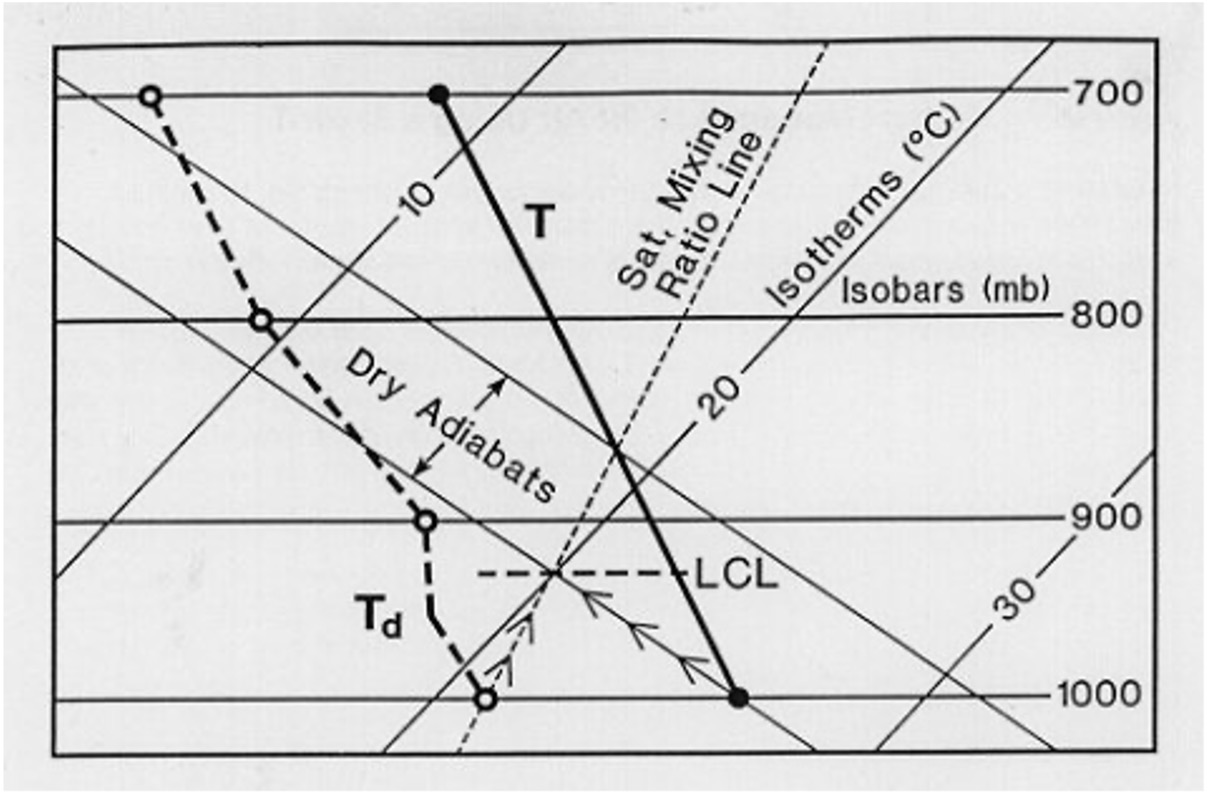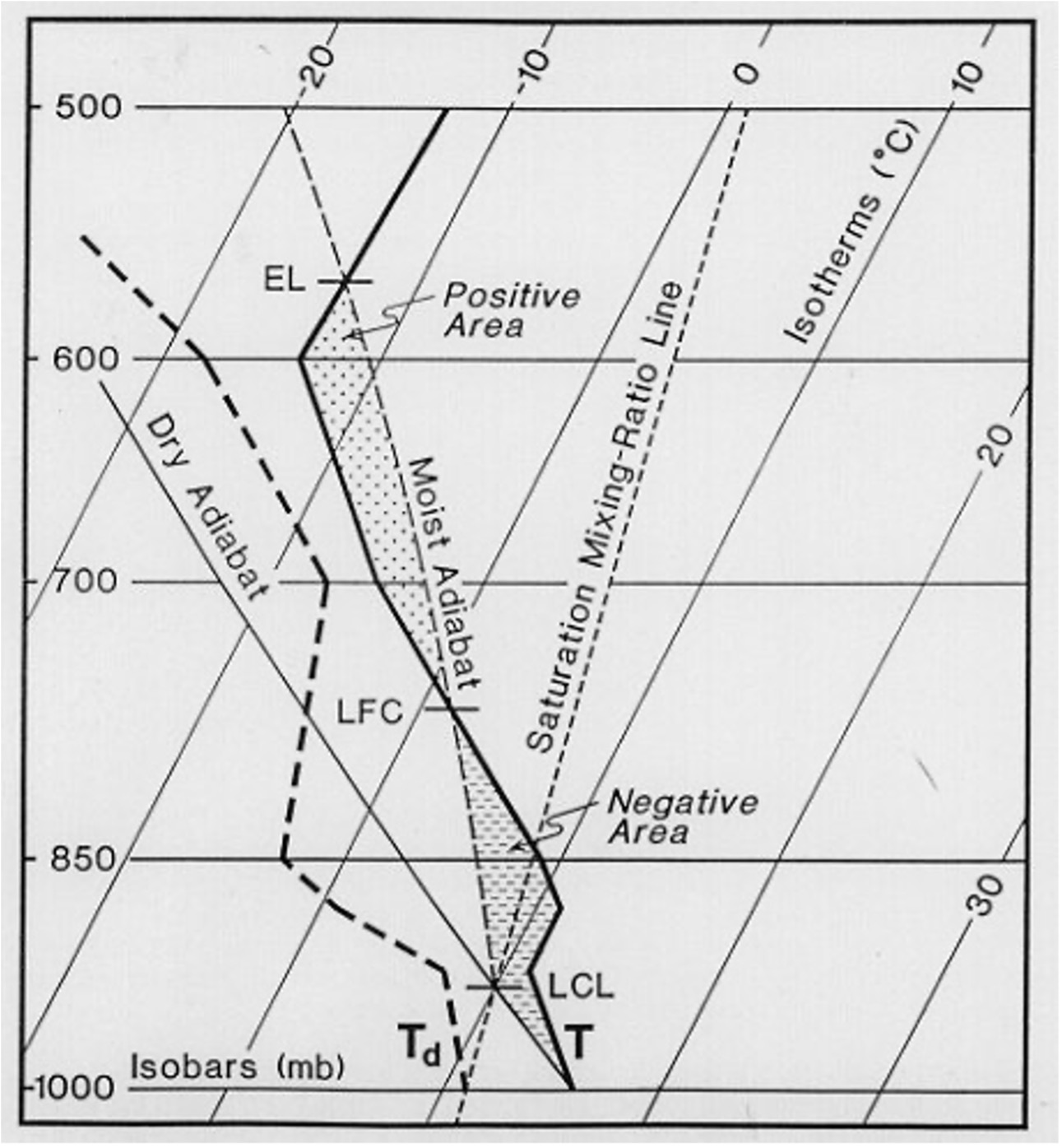20.8. Skew-T Parcel Path#
Skew-T diagrams are filled with lots of information; this part will introduce you to a few concepts related to stability that can be analyzed from an atmospheric sounding plotted on a skew-T diagram.
Drawing a Parcel Path#
To draw a parcel path, you must first determine the lifting condensation level (LCL). In previous courses you did this through assuming a DALR and WALR, now we will use the skew-T/log-p diagram. The LCL is where cloud bases will form and thus the point of initial saturation in the atmospheric column.
Lifting Condensation Level (LCL)#
Definition: The height at which a parcel of air lifted dry adiabatically would become saturated. The LCL is always found at or below the CCL.
Procedure: Follow the saturation mixing ratio line from the surface dew-point and the dry adiabat from the surface temperature upward until they intersect.

Fig. 20.3 This is a diagram to illustrate the finding of the Lifiting Condensation Level (LCL).#
Source: The Use of The Skew T, Log P Diagram in Analysis and Forecasting AWS/TR-79/006
Once the LCL is determined, then the parcel path can be drawn. Starting the surface parcel at the temperature of the surface and following the dry adiabat line up until you reach the LCL, then lift the parcel via the moist adiabatic line. (If you are not directly on a dry or moist adiabat, then follow parallel to the lines on either side of the parcel path.)

Fig. 20.4 This is a diagram to illustrate of plotting the parcel path using the lifting condentation level (LCL).#
Source: The Use of The Skew T, Log P Diagram in Analysis and Forecasting AWS/TR-79/006
As the result of drawing in the parcel path two other important levels are identified. The Level of Free Convection (LFC ) and the Equilibrium Level (EL).
Level of Free Convection (LFC)#
Definition: The level at which a parcel of air lifted dry adiabatically until saturated (LCL), then moist adiabatically becomes warmer than its environment.
Procedure: Find the LCL and then follow the moist adiabat upward until it intersects the temperature sounding. This is the LFC.
Note
Be careful when the LFC is below a sharp inversion. Ideally, one should continue to follow the moist adiabat through the inversion to determine the LFC.
Equilibrium Level (EL)#
Definition: The level at which a parcel of air lifted moist adiabatically from the LFC becomes cooler than its environment. This is an estimate of the cloud height of convective type clouds.
Procedure: Find the LFC, then follow the moist adiabat upward until it intersects the temperature sounding. This is the EL.
When the parcel path is to the right of the environmental temperature profile, the parcel is unstable and would want to rise. When it is to the left of the environmental temperature profile the parcel is stable and would want to sink. If the parcel is stable in the lowest layers (i.e., the level below the LFC) then the atmosphere must force parcels to rise in order for the parcel to become unstable and realize any instability that might be present in the Earth-atmosphere system.
